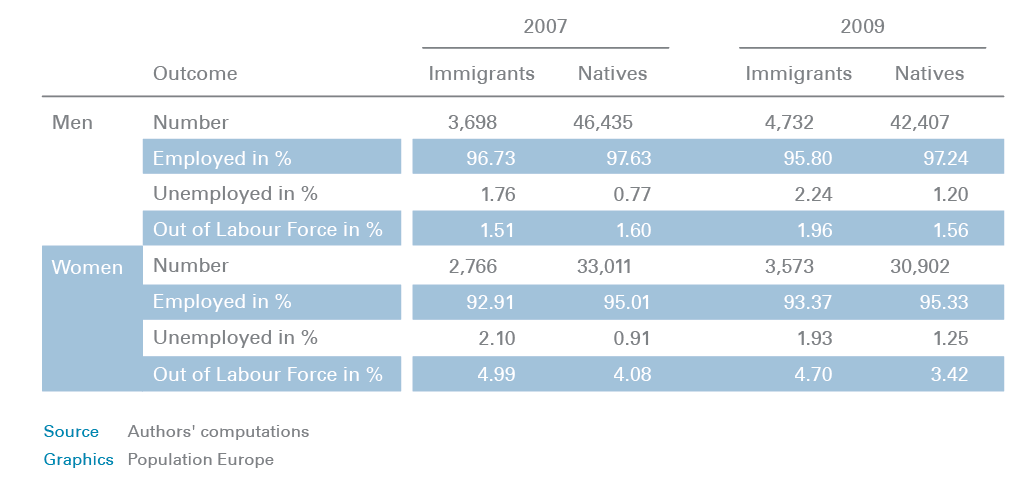Do the recent economic developments affect immigrants more than natives? And if they are suffering more and immediately, is this related to being an immigrant or to specific characteristics that make immigrants different from natives? Adriano Paggiaro, Assistant Professor in Economic Statistics at the University of Padua, tried to find an answer to these questions. He compared native and immigrant workers by using longitudinal data from the Italian Labour Force Survey.
Last hired first fired
At first sight, immigrants seem to have the same characteristics as the groups most likely to lose their jobs during a recession. They are often working in cyclical industries such as construction, and they are more likely to be part of the contingent labour force or in temporary employment. Furthermore, the system “last hired, first fired”, seems to disadvantage immigrants. But what happens if immigrant workers are compared to “similar” native workers that share the same characteristic?
Compare only comparable people
Paggiaro’s overall goal was to compare immigrants and natives in the Italian Labour Market that have similar attributes. He wanted to determine whether there are still differences between the two groups, even when comparing workers after using a so-called matching process. They were “matched” for certain characteristics which were summarized through propensity score methods. The characteristics he focused on were: individual demographics (such as age, region, education, marital status), household characteristics, education levels, and of course certain criteria related to the job they have. The type of job and contract, the sector, and also the size of the company played a role. He also checked the labour market conditions of the year before and during their overall lifetime experience. So for this study, Paggiaro considered immigrant-native pairs who share the same or at least a very close propensity score. The analysis contained three-month panels for the whole years 2007 and 2009.
Men and Women are different
Interestingly, Paggiaro found that male immigrants are more likely to lose their employed status. In fact, the downturn seems to only affect male workers. In 2007, male immigrants were more likely to lose their job. After the downturn, conditions changed for both, natives and immigrants, but it was worse for the latter. This was mainly because male workers were overrepresented in sectors which have been affected the most. (Table 1)

Table 1: transition rates from employment
The opposite is true for female workers because they mainly work in sectors that weren’t affected as much. Female workers even showed a slightly lower probability of losing a job in 2009. When comparing only comparable male workers, immigrant status itself has no impact on separation rates. After the matching procedure, the difference turns out to be negligible. Just like for men, almost all differences between female immigrants and natives disappear once matched in characteristics (see Table 2 for 2009, the main evidence for 2007 is similar).

Table 2: average outcomes after three months
Made equal
The overall findings are that if only workers who are similar are compared, the average differences between natives and immigrants disappear. The matching process strongly reduces the differences between immigrants and natives, and in almost all cases these turn out to not be significant anymore. When comparing only comparable workers, immigrant status itself has no impact on separation rates. Still, Paggiaro admits that this evidence does not lead to the conclusion that there is no discrimination towards immigrants at all, only that there are no differences based on immigrant status between equal workers. He also admits that the results only represent one part of the tale, since they just refer to immigrants in Italy who actually have a job.
This PopDigest is also available in French, Spanish and German.
This Population Digest has been published with financial support from the Progress Programme of the European Union in the framework of the project “Supporting a Partnership for Enhancing Europe’s Capacity to Tackle Demographic and Societal Change”.